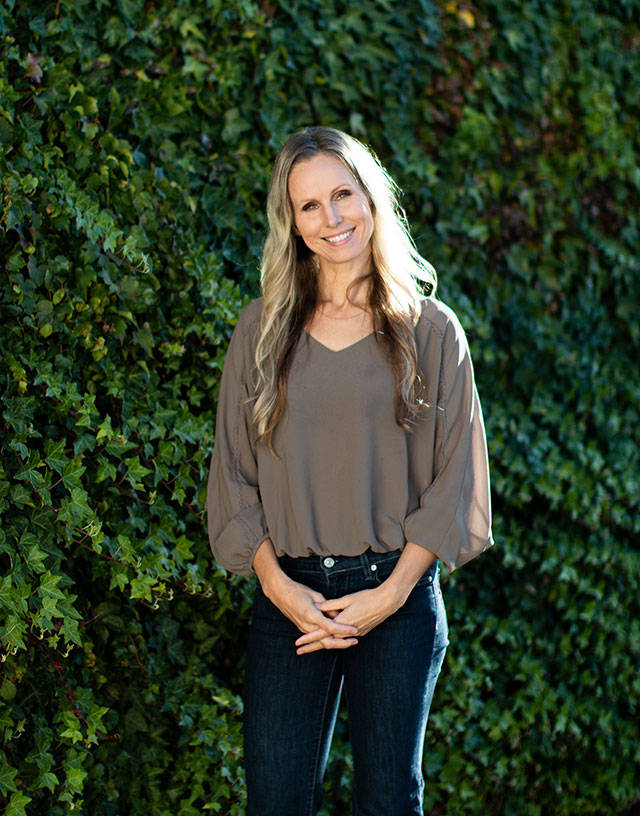The following was written by guest columnist Brandy Garton:
Ever wonder what it’s like to work for a newspaper or been curious about the job of a journalist? I have. So, when my Professional and Creative Writing B.A., required that I complete a practicum project before graduation, I used the opportunity to satisfy that curiosity.
I contacted Editor in Chief Ray Miller-Still, and asked about the possibility of doing a project for the Courier-Herald. After a series of communications, he gave the nod, and we came up with a seven-week project that would have me doing a combination of in-office and remote work.
The first several days of the project, I edited articles sent to me via email; then, I had my first in-office day. With my mask and an uncertain stomach, I arrived at the Myrtle Avenue address, excited, but nervous. At 48 years old, I would no doubt be the oldest “intern” the newspaper had ever taken on. The potential for awkwardness was real, and I was feeling a little age-aware already since one of my professors had recently referred to me as an “adult learner.”
I pulled at the door and stepped inside ready to join what I’d envisioned as the furious bustle of the newspaper world. As I entered, I was struck by the peacefulness of the small office. The only sounds were the persistent clicking of computer keys and the noise that seeped in from the street outside.
Immediately, nobody seemed to notice me. Then Frances came over and extended a warm welcome, her energy and enthusiasm assuaging some of my nerves and reminding me to exude vitality (youth). I tried to match her exuberance as we walked toward what would be my workspace. Ray met us part way across the room, and welcomed me with an air of friendliness I’d already come to recognize as his usual demeanor.
Eventually, I settled into my chair and spent the next couple of hours observing the office culture as I edited articles for the current week’s newspaper. Frances checked back frequently, despite her own busyness, and it became clear to me that she was the social butterfly of the group, periodically, circulating between the arranged desks, one in each corner of the room, and my table centered in the middle.
The working silence was broken occasionally by phone calls which were helplessly overheard by every other body in the office, an intimidating, yet insightful arrangement for a newcomer. Over time, I got the impression that some were more comfortable with the open airspace than others, or perhaps it was the new ears in the room that kept some more reserved.
Besides phone conversations, the quiet was occasionally overcome by a general comment offered to the whole and which would incite a short commentary from each listener. More often, though, it was broken by an expletive or other such self-talk which casualized the atmosphere and exemplified the closeness of this local newspaper’s staff.
Week after week, my knowledge of the technical aspects of the Courier-Herald’s operation advanced along with my sense of ease. Journalism is a work governed by deadlines, dummies (the mock-up of the week’s paper), percentages, and relationships. It’s about balance and design, and about stories that are interesting and stories that are necessary.
I quickly identified the parts of the job I would enjoy and those I would struggle with.
Designing the news, for instance, holds little appeal to my writer’s brain. The variety of each week’s news sits nicely within the stable structure that shapes its delivery, but it must be made to fit aesthetically. That can mean manipulating such minutia as the spacing between letters to mitigate an orphan jump (when a tag advances to the proceeding column), or otherwise managing text to adhere to basic newspaper design principles like the proximity of photos and corresponding headlines.
The thought of having to write about topics that don’t interest me and in a way that restricts creative delivery, also put me off from journalism. But the deal-breaker was the deadlines. As a creative writer, it isn’t uncommon for me to take hours crafting a single line. And, well, that would lead to very little news delivery, albeit, exceptionally-worded news.
On the other hand, I enjoyed the early access to local news. I could see myself enjoying a deeper sense of belonging to this community, and the idea of building relationships with community leaders also appealed to me. And undoubtedly, I would enjoy being part of this local news staff. With them, I found myself among kindred, conversing about such lively topics as the Oxford comma and the properties of a “loose” paper.
Perhaps the most important thing I learned about journalism and the running of a local newspaper isn’t technical at all. It’s the importance of heart. The heart to serve a community, to discover its character and by extension its wants and needs and to pursue those things without self-interest.
I had gotten what I’d hoped for out of this brief internship — a small sense of journalism and an understanding of how a newspaper runs. I laugh in retrospect at my pre-conceived notions of it. It turns out I hadn’t sprinted any long hallways clutching the latest breaking news, but I had gotten lost in a corn maze for the better part of an hour with a certain un-named editor.
The final articles edited, I capped my pink pen and laid it wistfully on the table. I returned Ray’s copy of The AP Style Guide and thanked him for the opportunity, extending a thank you also to the rest of the staff for tolerating this geriatric intern.
With an augmented endearment to this local newspaper I issued a final goodbye, gave Frances a last pat on her furry head, and headed out into the rain.


